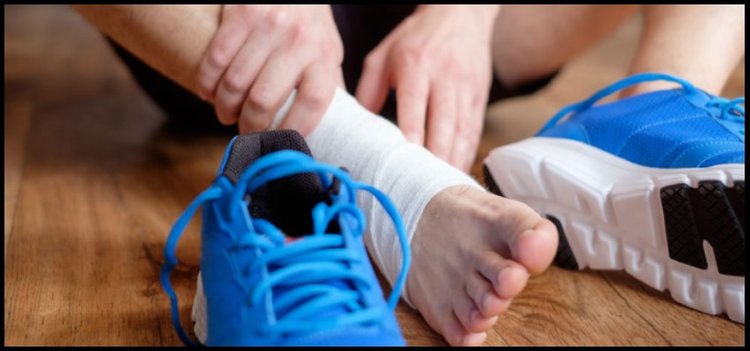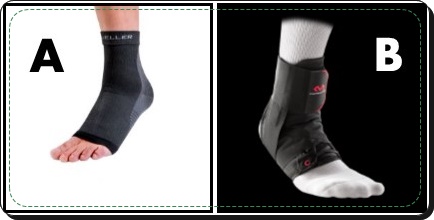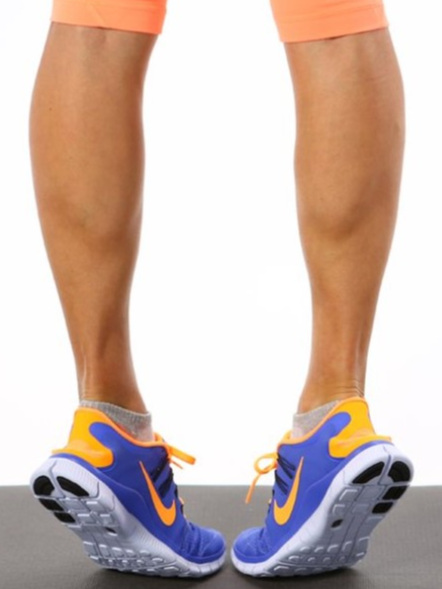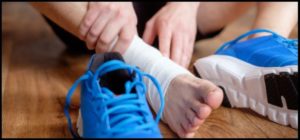How ankle braces may help you (and hurt you) when returning to sports

How ankle braces may help you (and hurt you) when returning to sports
January 11, 2019
 There are two types of ankle sprains; you can turn your ankle in or out which can affect the ligaments and muscles on the inside or outside of your ankle. After an ankle sprain, many people will decide to wear an ankle brace to make their ankle feel better. Some people will continue to wear a brace, or have their ankle taped, in practice for months while trying to help their ankle heal. But do you know how the ankle brace is helping? Do you know how long you should wear it? When do you stop wearing it? Has it helped you get better? Here we provide some information for you about how ankle braces help, in what ways they don’t help, and how you can help yourself get back to 100% in the gym, or in your sport without having to rely on a brace to keep you steady!
There are two types of ankle sprains; you can turn your ankle in or out which can affect the ligaments and muscles on the inside or outside of your ankle. After an ankle sprain, many people will decide to wear an ankle brace to make their ankle feel better. Some people will continue to wear a brace, or have their ankle taped, in practice for months while trying to help their ankle heal. But do you know how the ankle brace is helping? Do you know how long you should wear it? When do you stop wearing it? Has it helped you get better? Here we provide some information for you about how ankle braces help, in what ways they don’t help, and how you can help yourself get back to 100% in the gym, or in your sport without having to rely on a brace to keep you steady!
What Ankle Braces Do?
Ankle braces provide support to the ankle after injury. They can apply compression, like in picture A (below), or provide support or immobilization, like in picture B (below).
Braces do some good things for your ankle. Here are some things we know ankle braces do that can be helpful:
- Provide support that can make the area feel more secure so you can keep walking or participating in practice
- Pressure and compression can reduce swelling
- Provide support that may prevent rolling the ankle while wearing the brace (picture B only)
Braces, like the one in picture B, keep you from moving the ankle which helps the ankle rest, this is called immobilization. While immobilization right after the injury may have some benefits, like keeping your ankle from rolling again, wearing the brace for longer periods of time can be detrimental.

Negative Effects of Wearing an Ankle Brace
 When the ankle is held in one position for long periods of time the muscles will start to shorten and reduce the amount of motion you have at the ankle. This motion is essential for running, jumping, and cutting during sports. Additionally, prolonged rest means decreased blood flow. Blood flow is important to bring the healing cells to the injured area for rebuilding strength of your ligaments and muscles.
When the ankle is held in one position for long periods of time the muscles will start to shorten and reduce the amount of motion you have at the ankle. This motion is essential for running, jumping, and cutting during sports. Additionally, prolonged rest means decreased blood flow. Blood flow is important to bring the healing cells to the injured area for rebuilding strength of your ligaments and muscles.
Muscles and ligaments are programmed to adapt to the stress they are put under. Muscles that are consistently loaded build up bigger to get stronger, muscles that are resting for longer periods will be reduced in size and get weaker. According to studies; “Just five days of immobilization results in measurable loss of muscle mass and strength.” Which shows that wearing a brace for just 5 days can impact the strength of your ankle! During this period of rest, there will also be decreased communication between muscles of the ankle and the brain because the ankle is not moving as much. This can lead to a decrease in coordination of your ankle which affects how your ankle will function when balancing, running, or cutting during sports. This poor coordination will cause decreased performance on the field which can lead to repeat injuries or other new ankle injuries.
To Sum It Up, Ankle Braces DO NOT

Make you heal faster
Make your ankle stronger
Get you back to the level you were at before the injury
Prevent injuries from happening again
Your Brace May Be Helping, But Your Body Can Do Better
It’s not what you do in your brace, it’s what you do without it
When recovering from an ankle sprain it is great to wear an ankle brace when first returning to your sport to help you feel more confident in practice and to help you learn to trust your ankle again. When you are not in practice, it is essential to participate in a rehab program that helps your muscles and ligaments heal, strengthens the muscles that were injured, and helps to correct the faulty mechanics that allowed the injury to happen in the first place.
A good rehab program should include tasks that help you:
- Increase blood flow to bring healing cells to your ankle structures
- Appropriately and progressively load the ankle muscles to allow for muscle adaptation that increases your ankle strength and stability.
- Correct body mechanics through a strength and control program to strengthen the muscles that were weak prior to injury and prevent it from happening again
